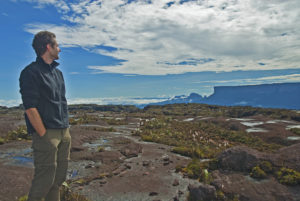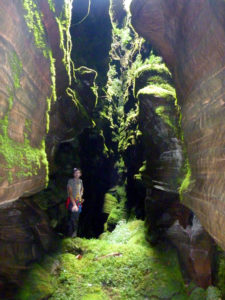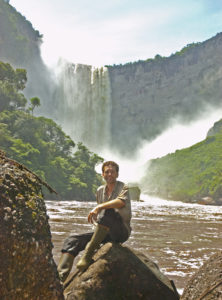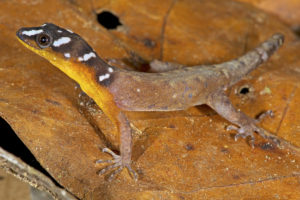Biologist reminisces of his work and discoveries in Guyana’s interior
Uncovering new species of amphibians and reptiles in Guyana, some found nowhere else in the world, Philippe J. R. Kok, a “taxon-oriented scientist”, is certainly someone you would enjoy chatting with.


The 45-year-old holds a PhD in Biology. He was born in the (Democratic Republic of Congo, where his father was a medical doctor for the Kilomoto mines. Philippe has been working for more than 20 years as a research associate at the Royal Belgian Institute of Naturals Sciences, and is working at the Free University of Brussels since 2009, where he also teaches a course entitled “Field Herpetology” (a course he taught four times in Guyana).
Guyana Times Sunday Magazine had the privilege of interviewing the scientist, who outlined some of his most exciting discoveries in Guyana.
Guyana Times Sunday Magazine (GTSM): Why did you choose Guyana as one of the countries to conduct research?

Philippe J. R. Kok (PK): I have a long interest in studying the herpetofauna of the Guiana Shield, and I was invited by a colleague to a conference in Georgetown back in the early 2000s to present some of my research done in French Guiana. That was my first visit in Guyana. Although the airplane company lost my bag, thus making my first journey a bit difficult, I immediately fell in love with the country and its people. There is a very special blend in Guyana that I immediately appreciated. The country still has large pristine areas, and I like to be in the field far from civilization. It was also the opportunity for me to get closer to the famous “tepuis” (tabletop mountains) that I dreamed to study since I was a child. Shortly after my first visit, I got the chance to start a project about the herpetofaunal diversity in Kaieteur National Park. That was enough to make me become addicted to Guyana.
GTSM: Do you work with a team in Guyana?
PK: Yes, most of the time. I have been actively working with many Guyanese, including colleagues from UG, parataxonomists, rangers, and even gold/diamond miners who got interested in my research. I have fantastic memories working with some of them, and I am sad that I cannot get in touch with some of these miners these days as they live a simple life with poor communication. I always tried to have my Guyanese colleagues involved in my research and publications, and I even dedicated some new species to them. For instance, Oreophrynella seegobini is dedicated to Giuliano “Kinky” Seegobin, a great guy working in the Chenapau area.
GTSM: What’s the focus of your research in Guyana?
PK: My research focus extends beyond Guyana alone. I have several main research topics, which include the evolution, systematics, taxonomy and biogeography of amphibians and reptiles in the Neotropics, more specifically in the Guiana Shield. My work now primarily focuses on vertebrate evolution in the Pantepui region (the so-called “Lost World”).
I try to understand the spatial patterns of biological diversity (my models being the amphibians and reptiles) and its causes through geological time, which implies to better understand the relationships between all these species – their genealogical history to make it simple. To achieve this, I am documenting the diversity of amphibians and reptiles (describing new species when I find them), and collecting DNA to perform molecular phylogenies. At the end, I hope that my research will help to take adequate measures for the conservation of these fantastic animals and their habitats.
The data collected are published in scientific journals. The specimens are kept in museums to allow other researchers to access them and study them.
GTSM: What are some of your exciting discoveries?
PK: I have been lucky to make several great discoveries. I described many new species and even genera of amphibians and reptiles (among them 17 new species from Guyana, one of them dedicated to the former Prime Minister of Guyana, Honourable Samuel Hinds for his constant support in my research). I also rediscovered one of the rarest mammals in the world, the Roraima mouse, on the summit of Wei-Assipu-tepui in Guyana, which allowed us to develop new hypotheses about the evolution of rodents in the area.




